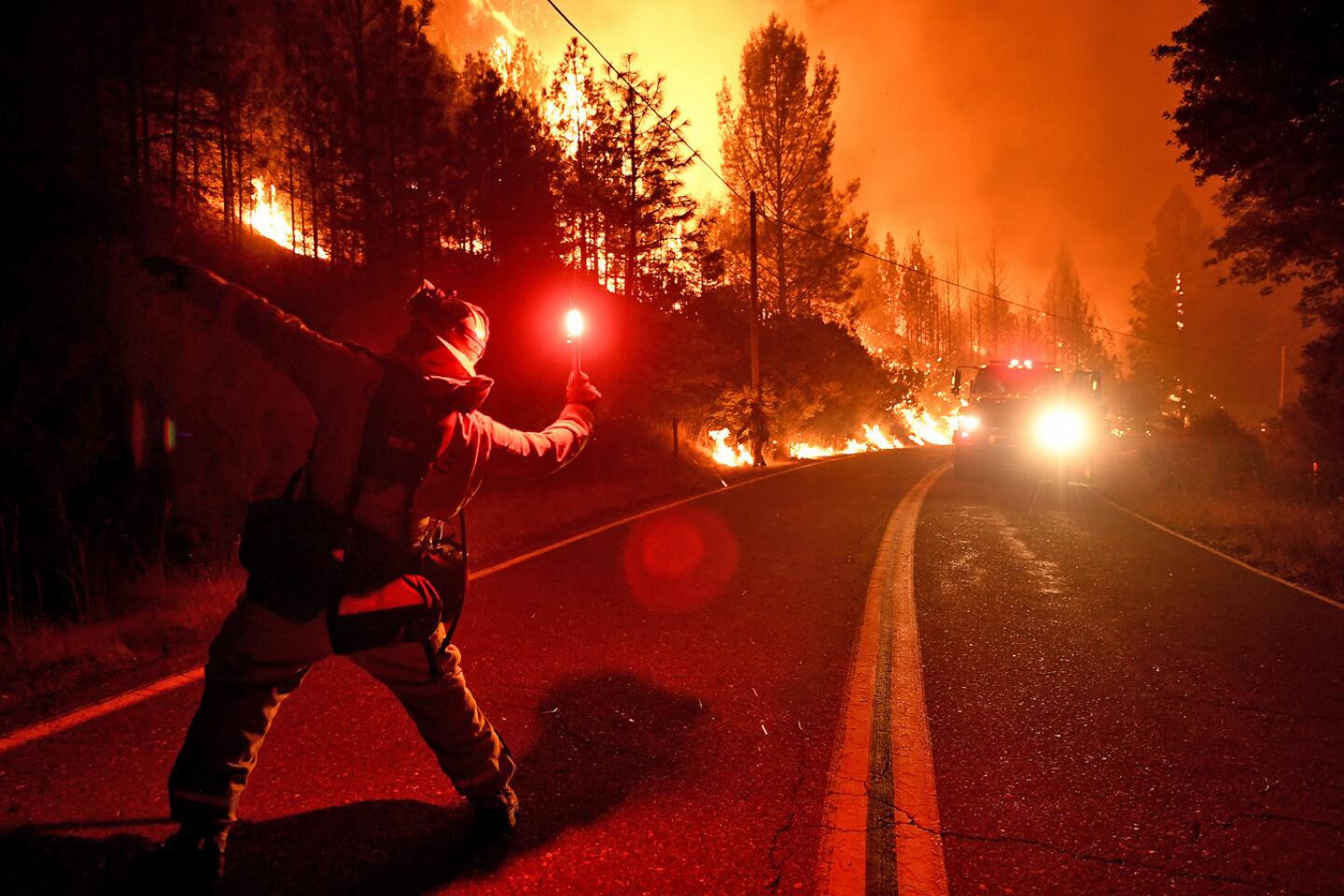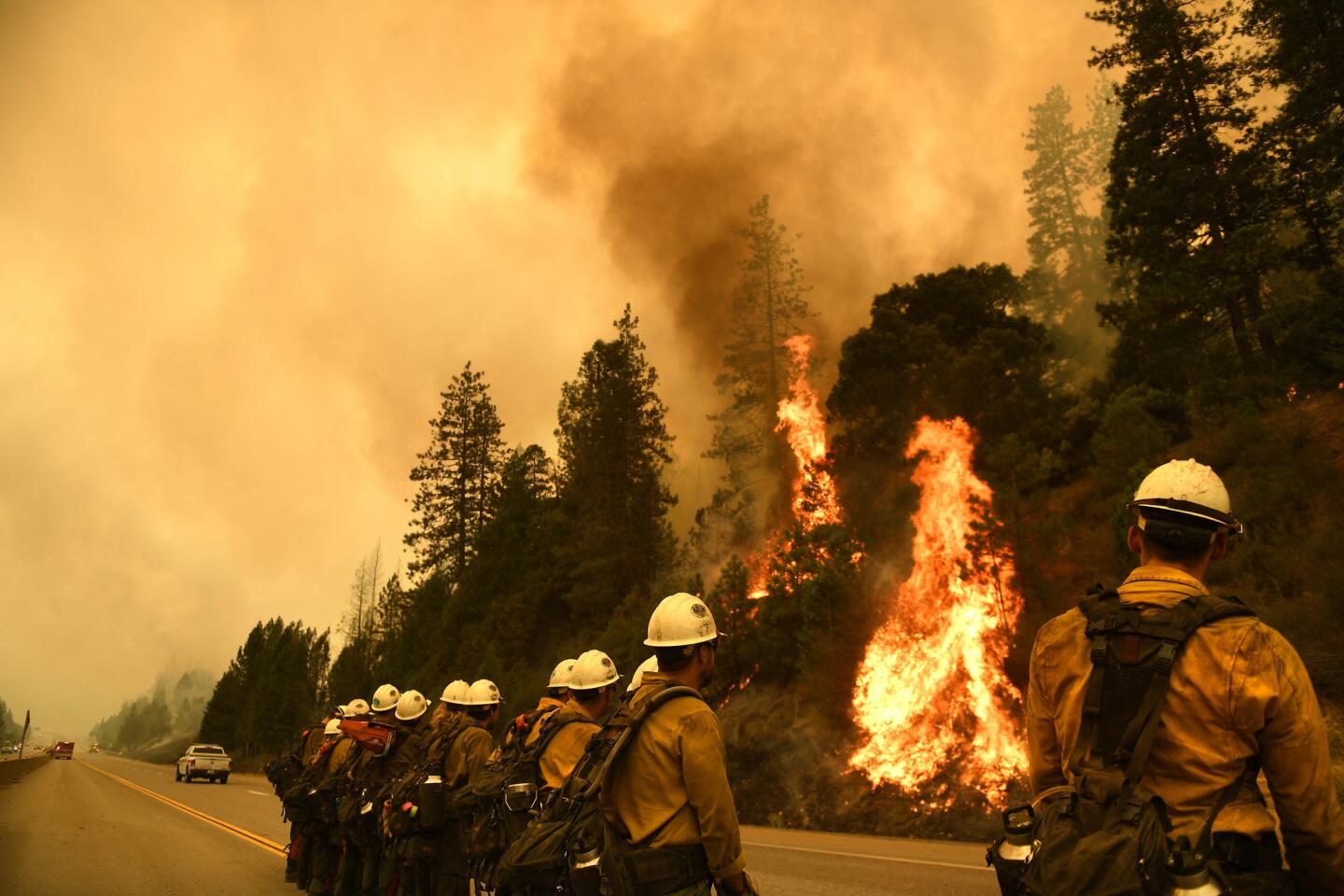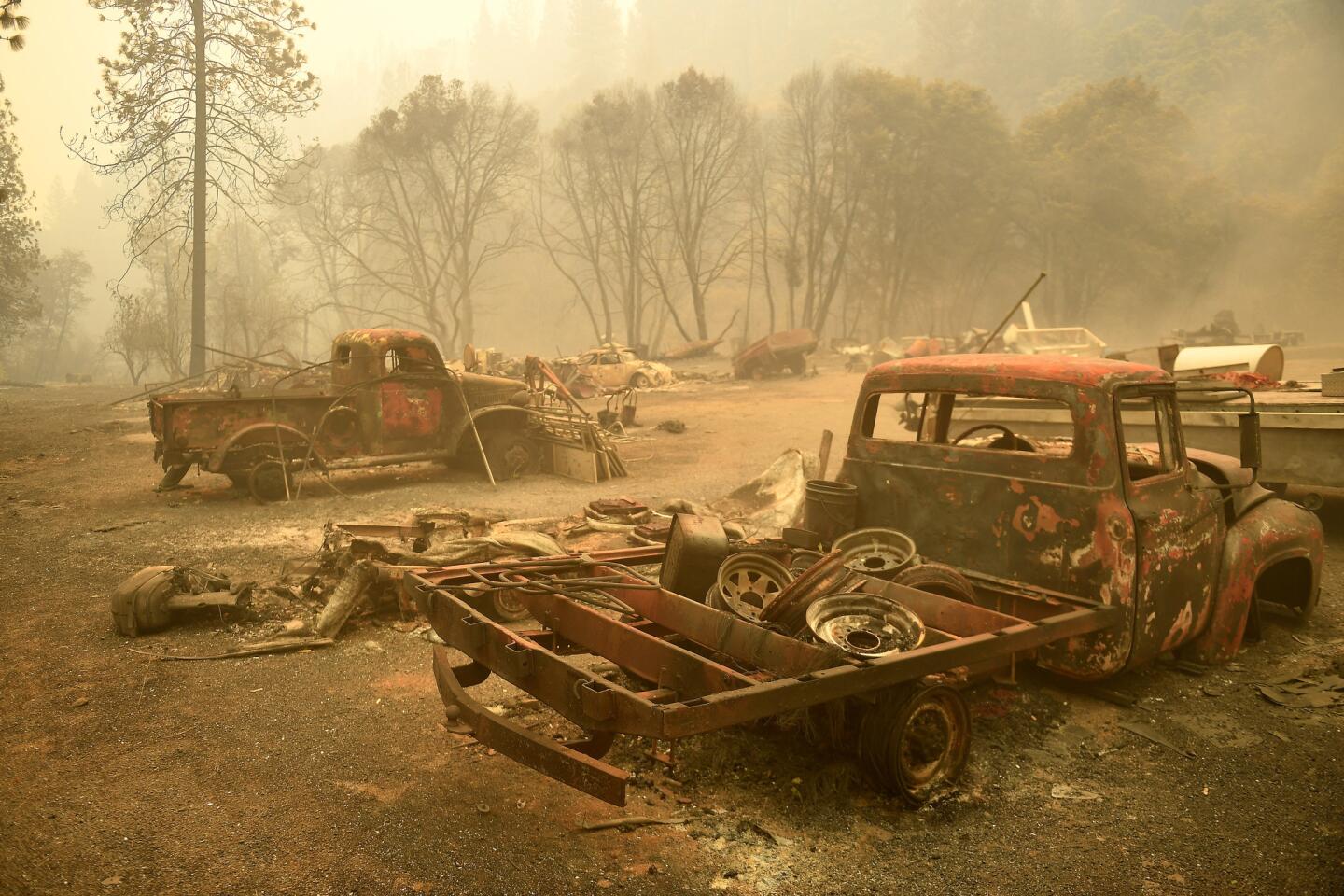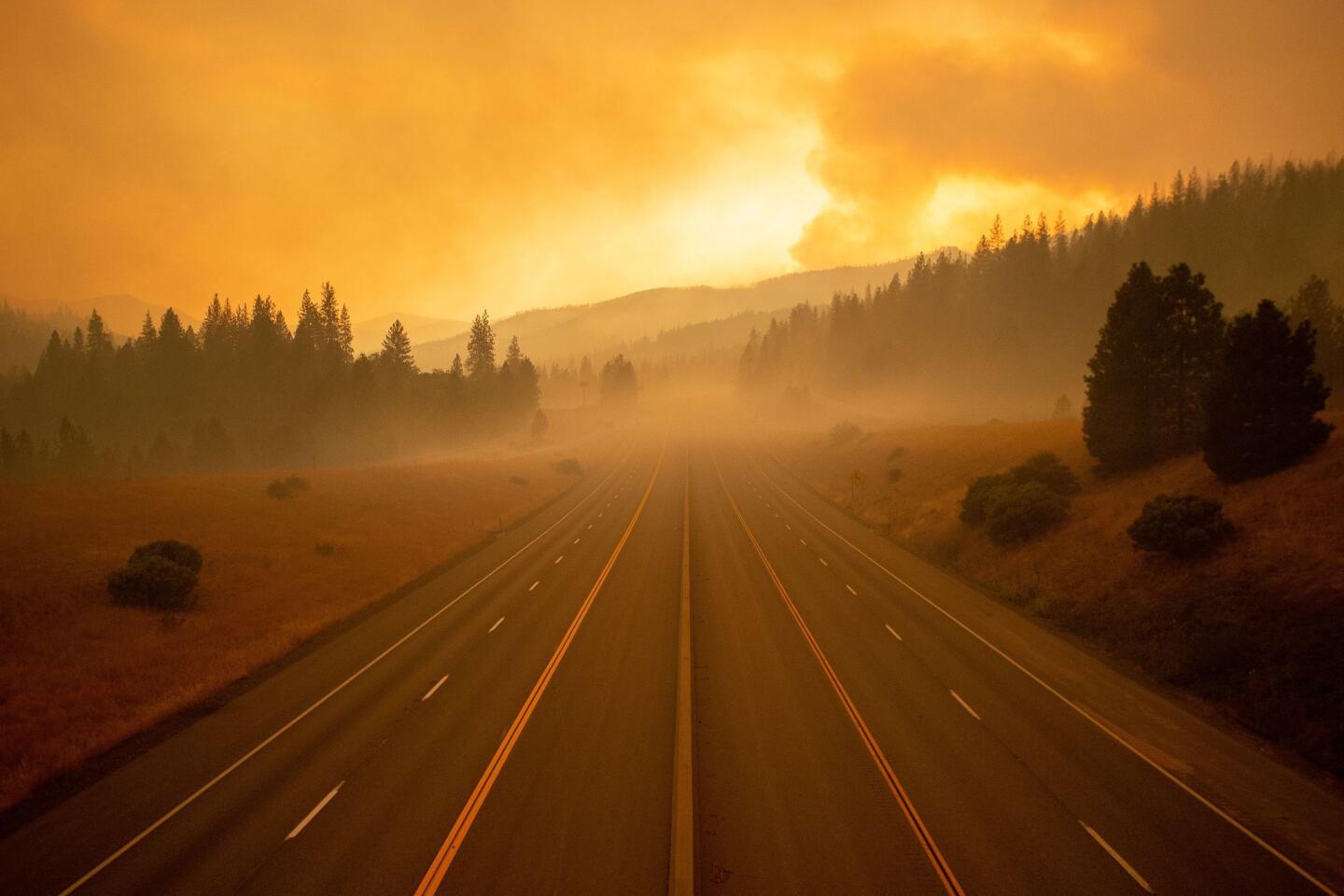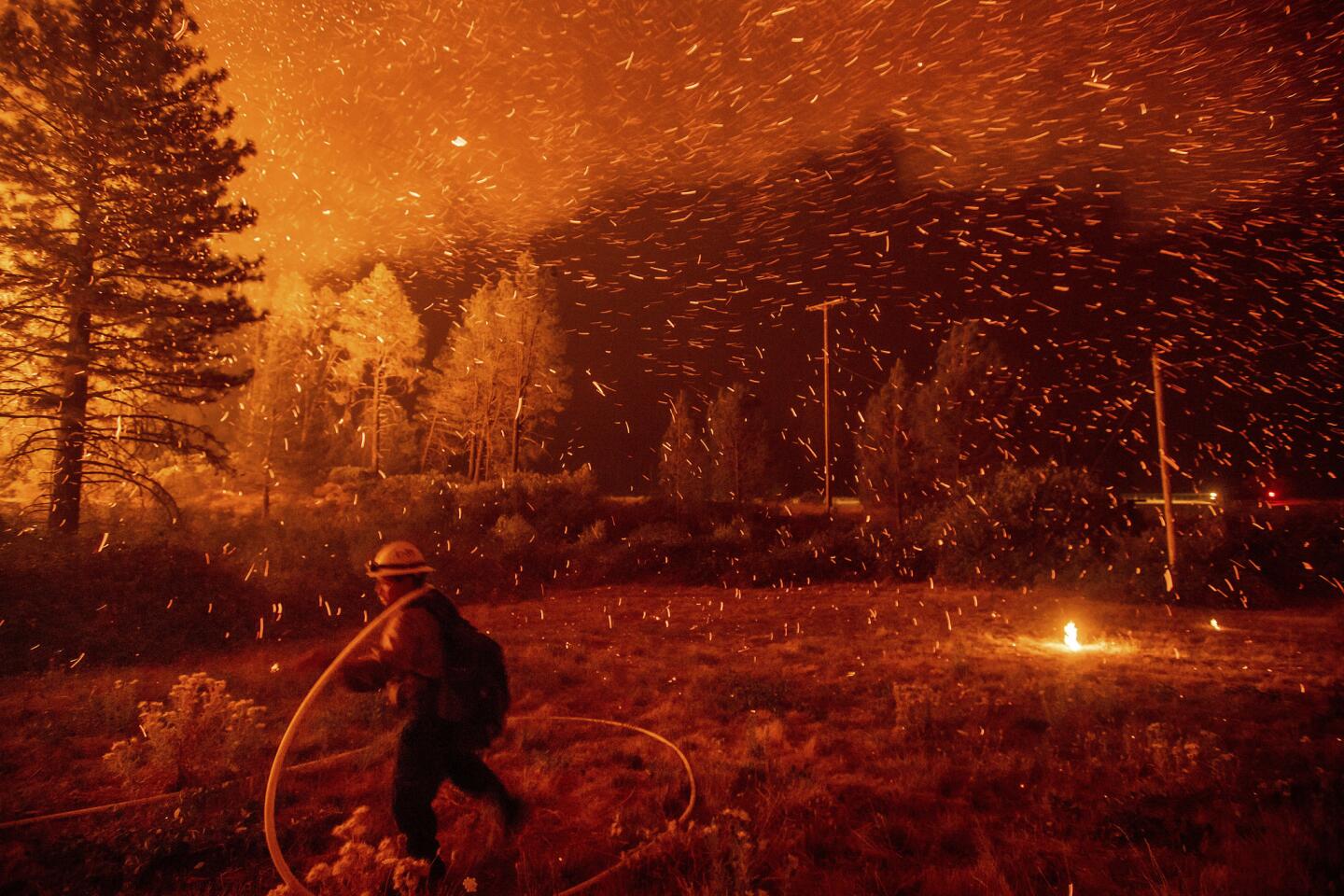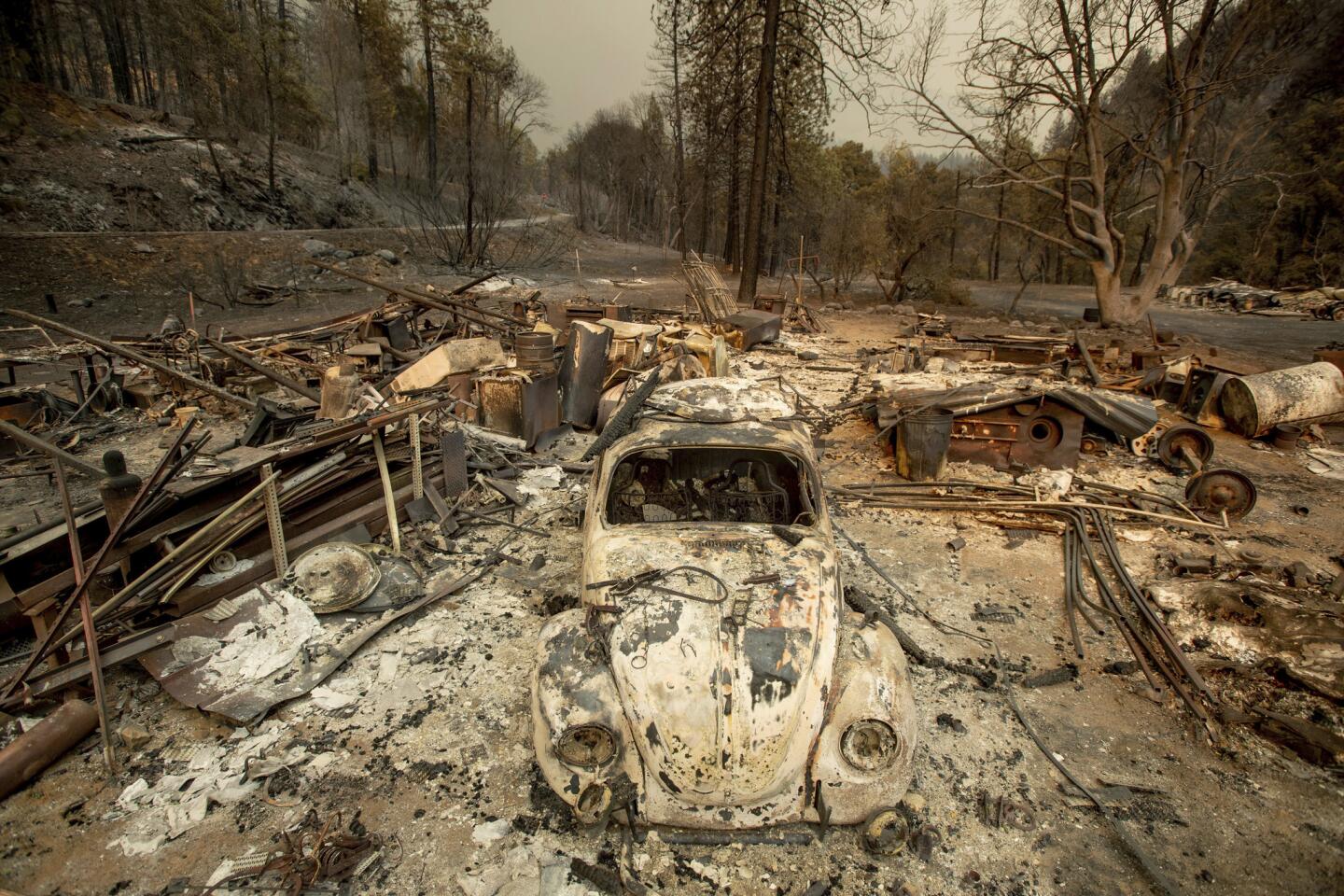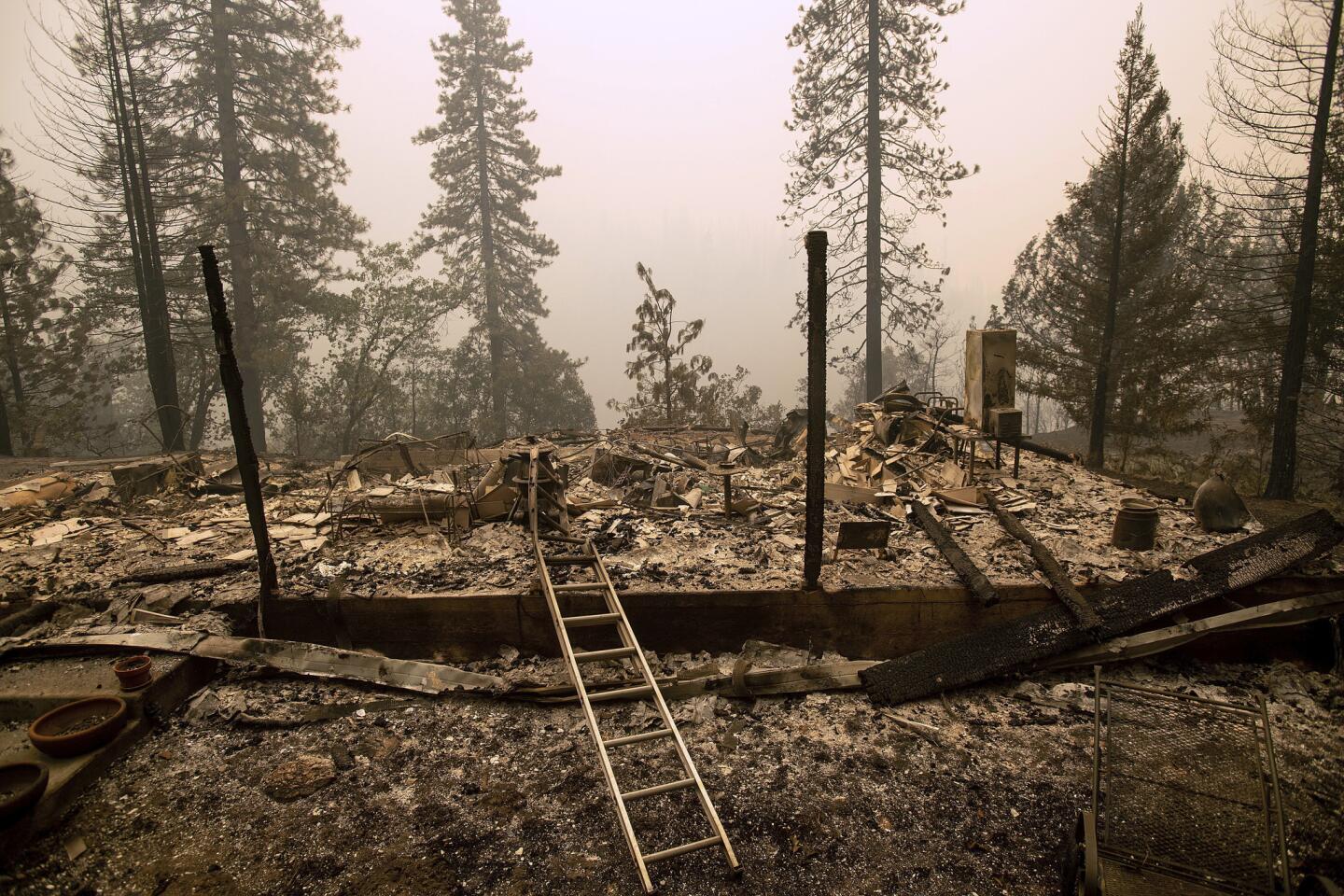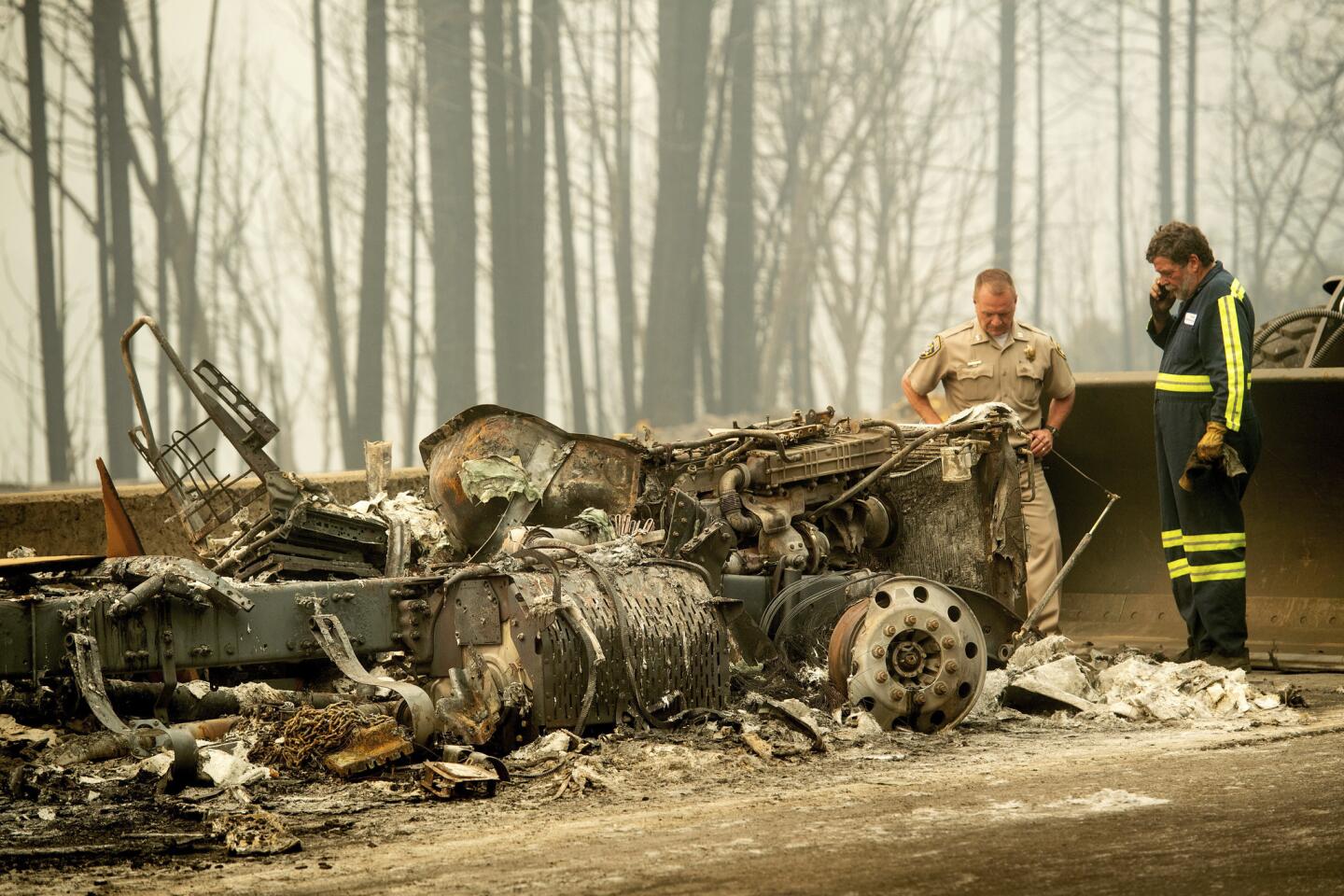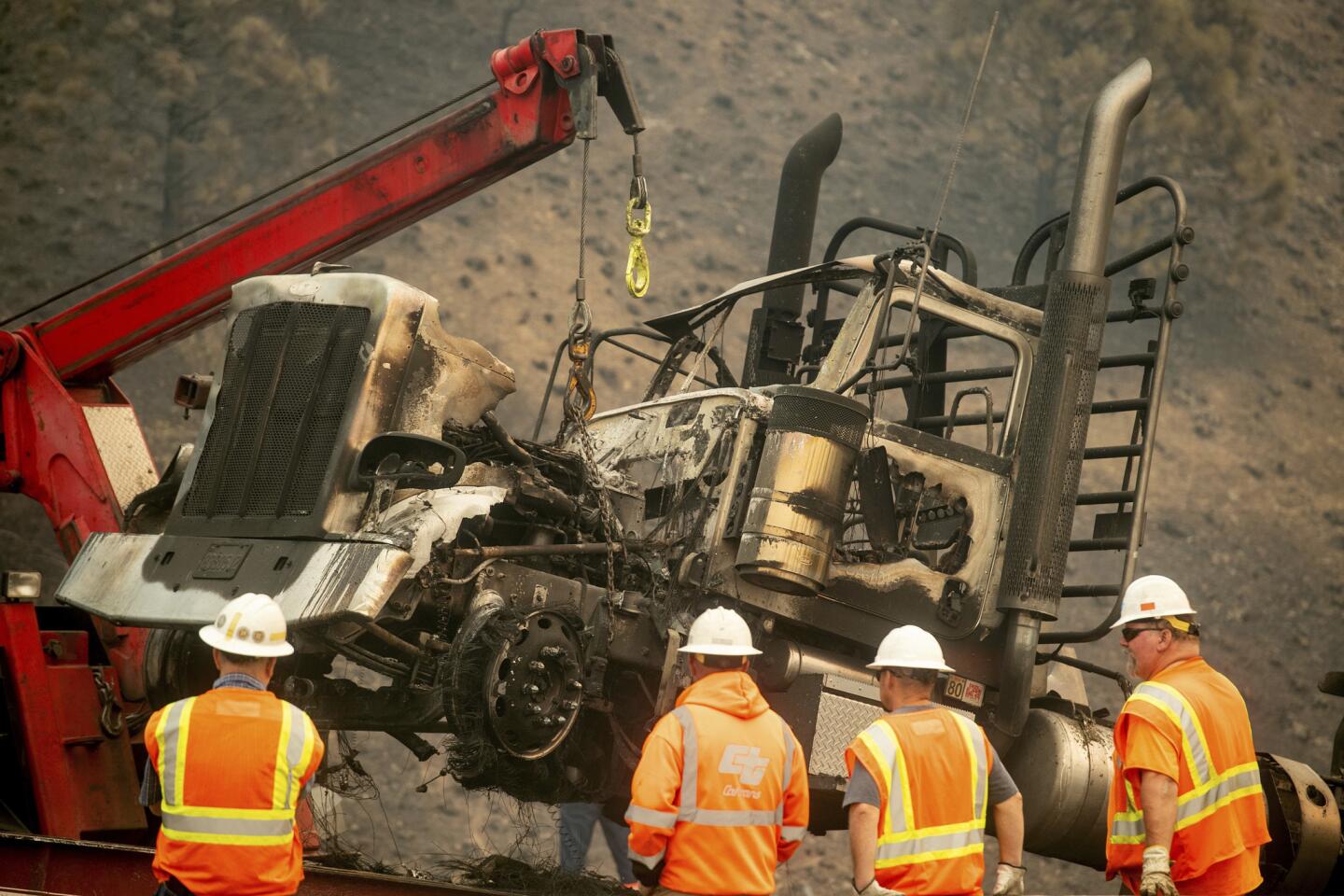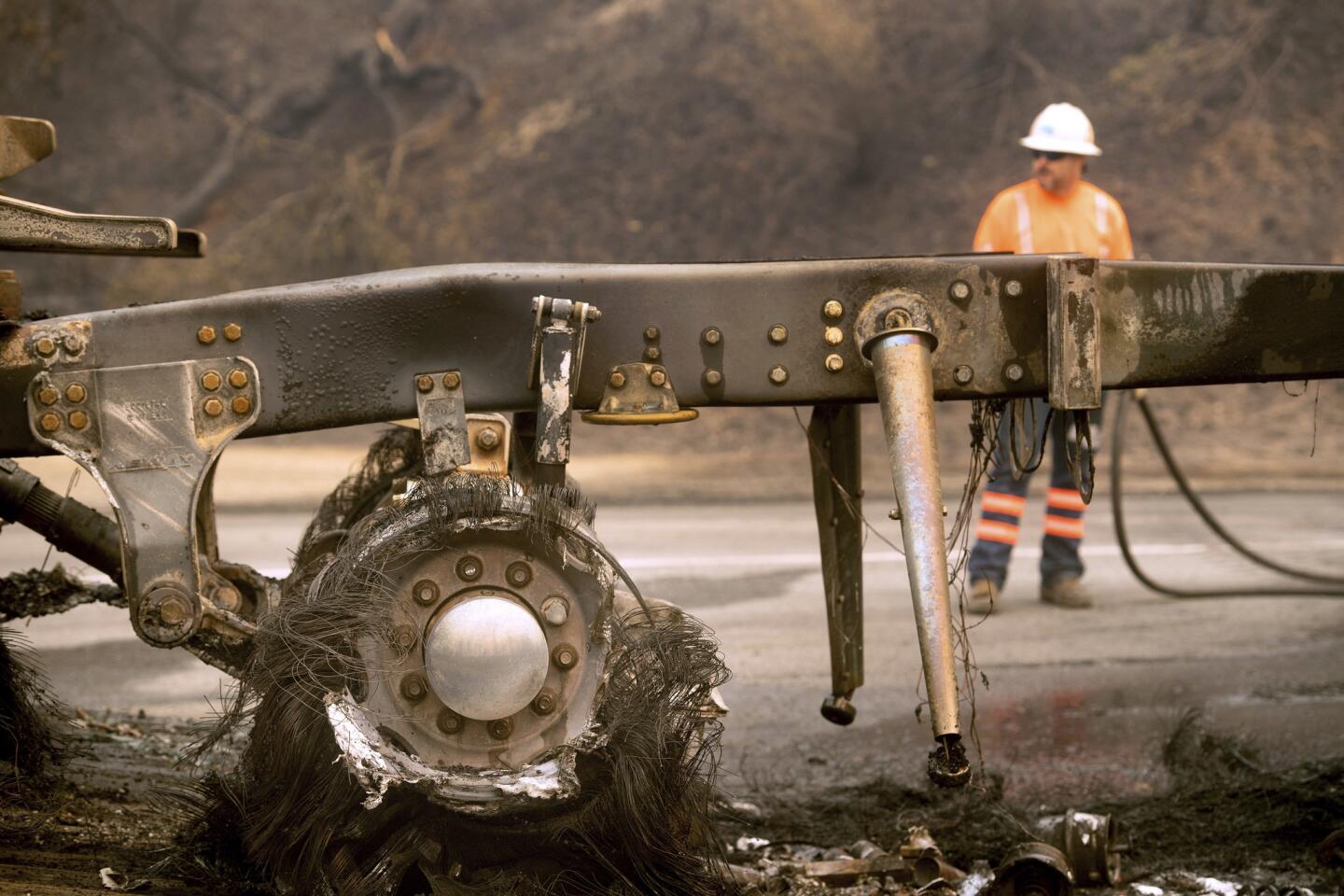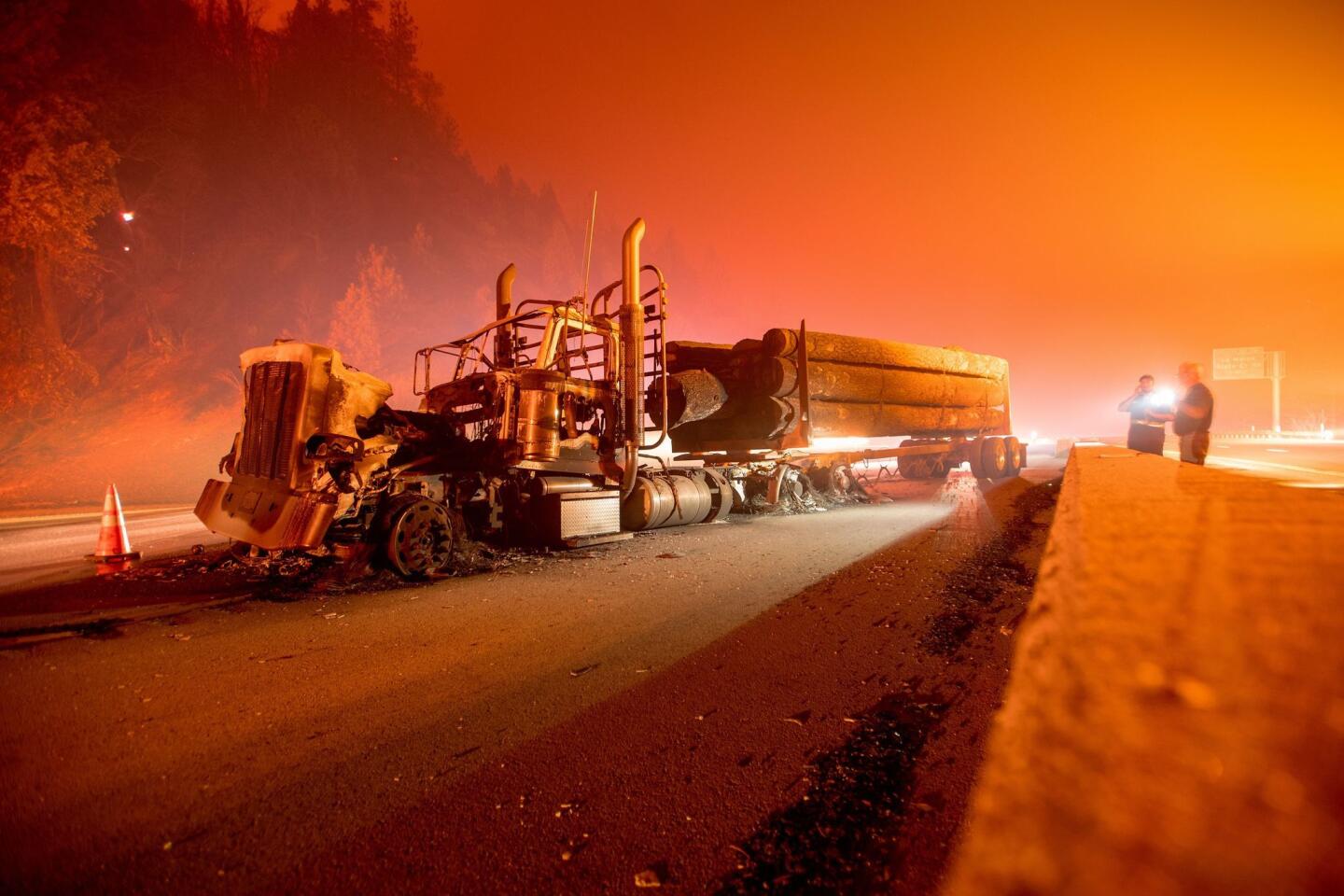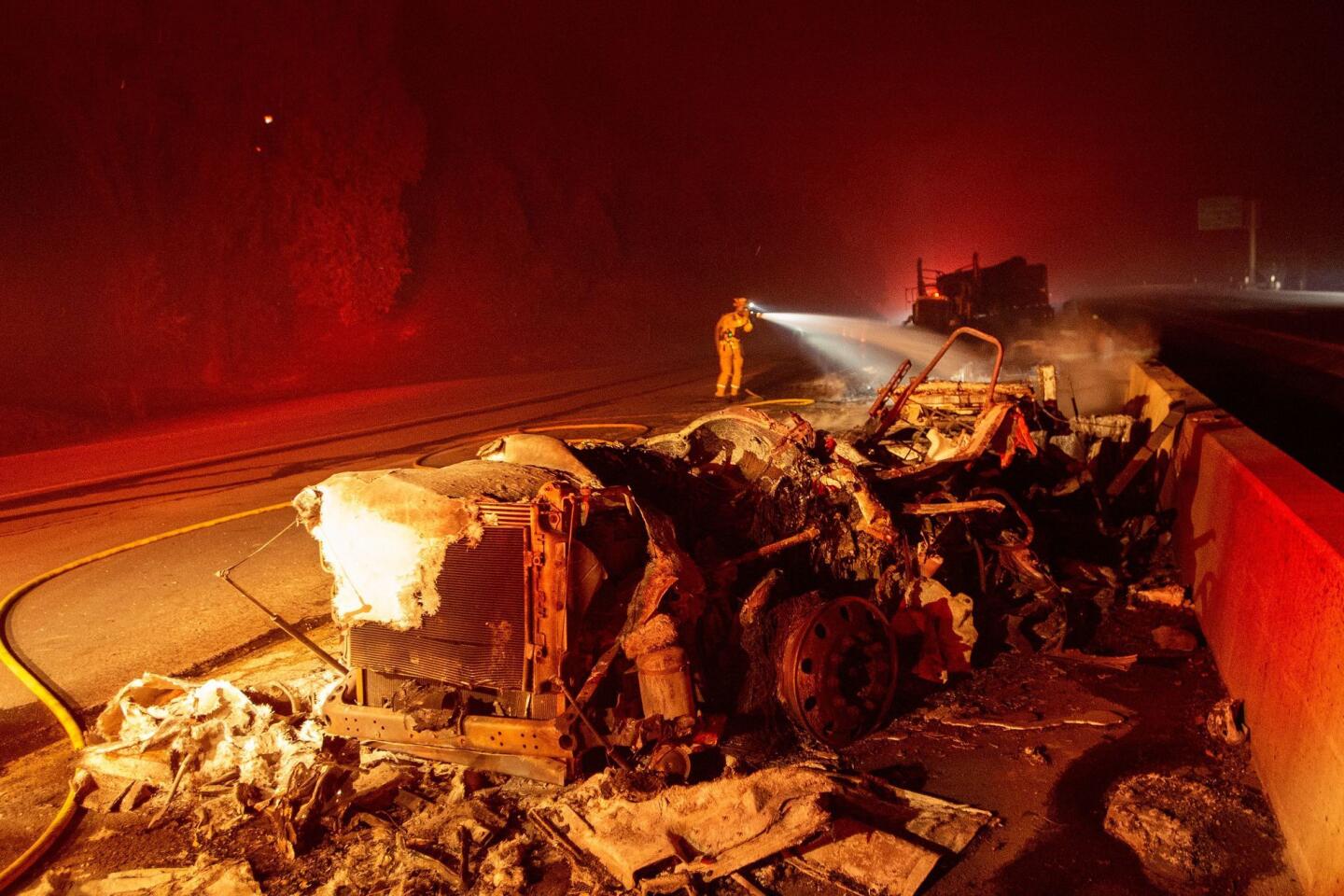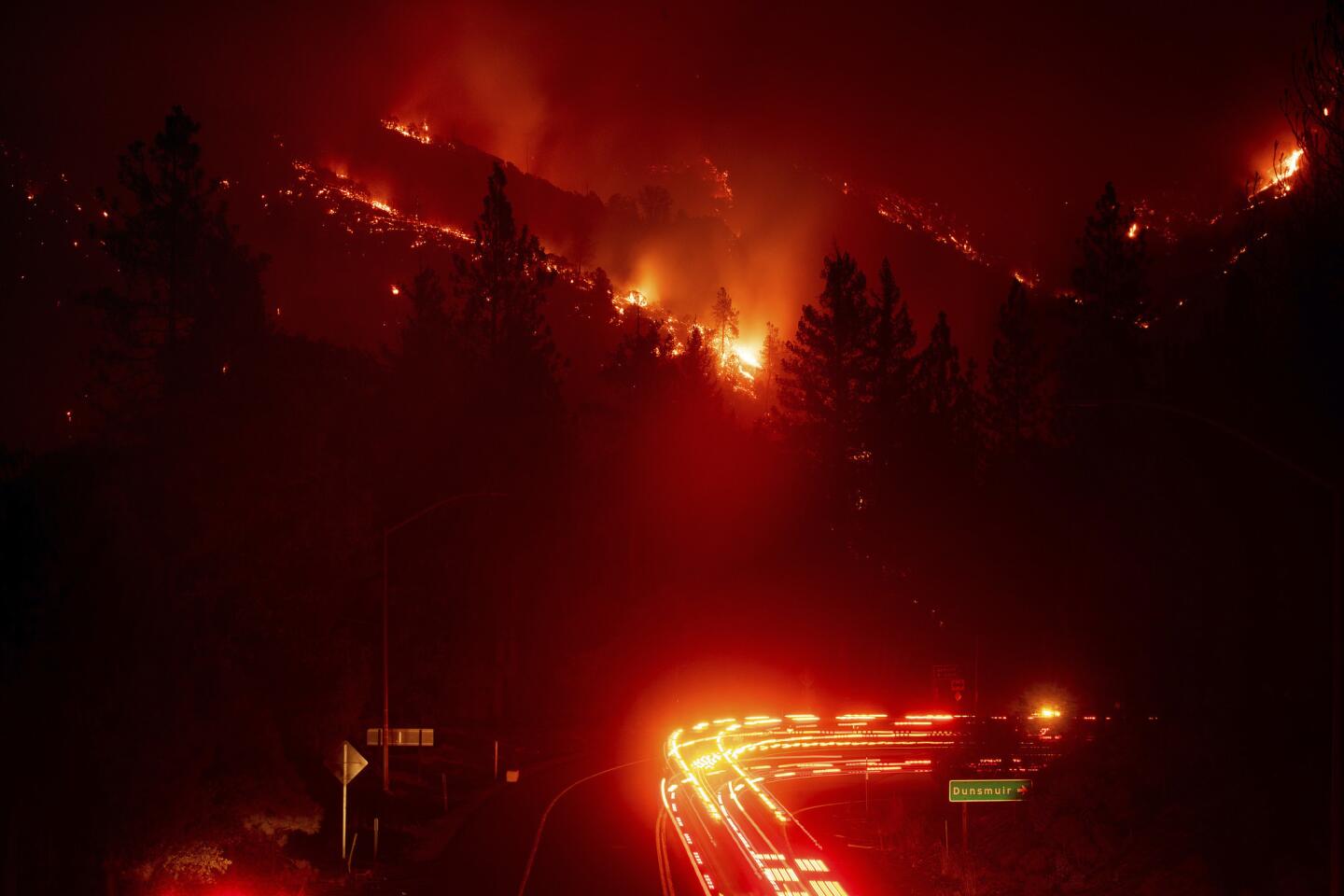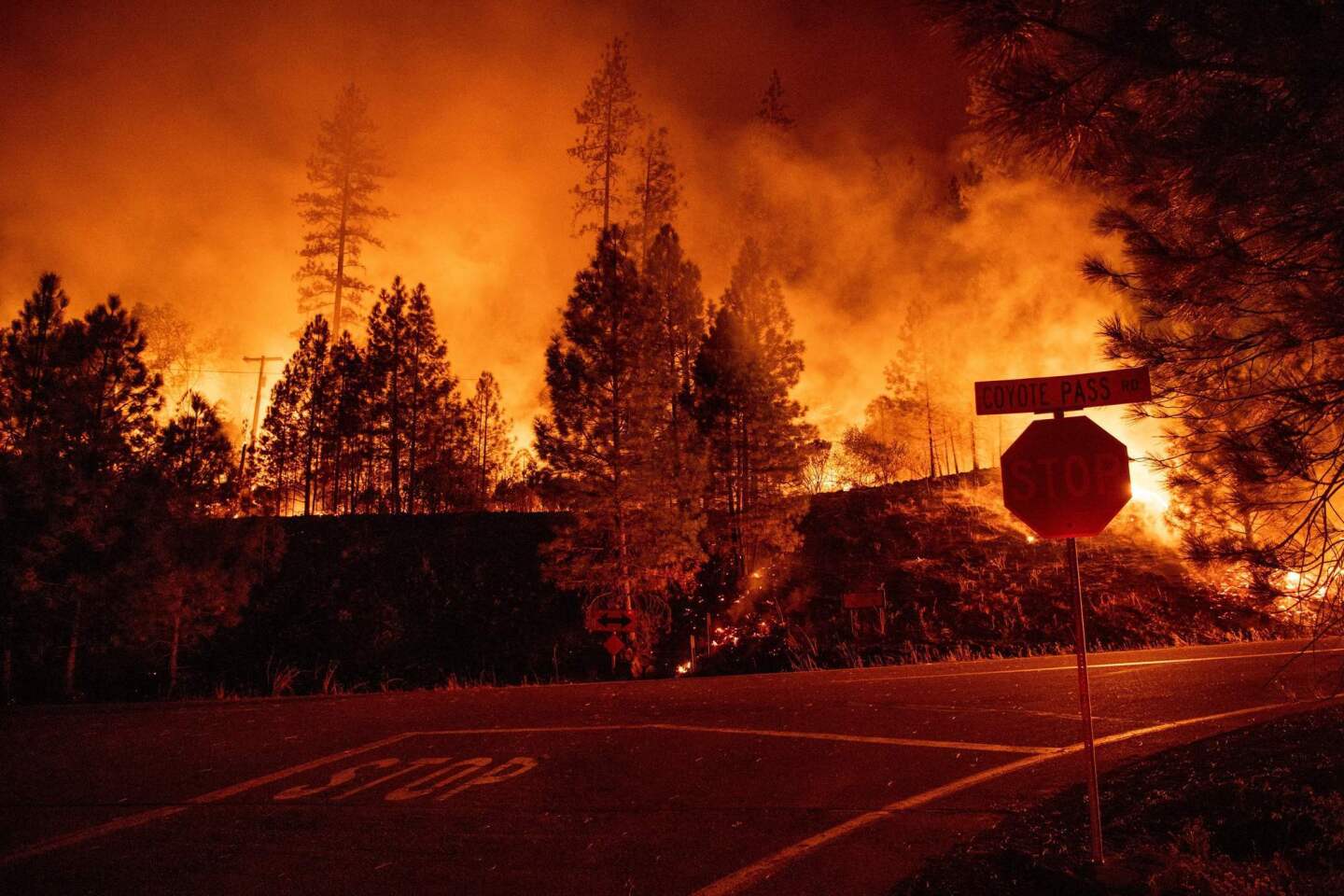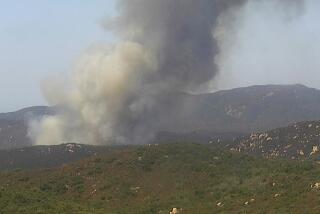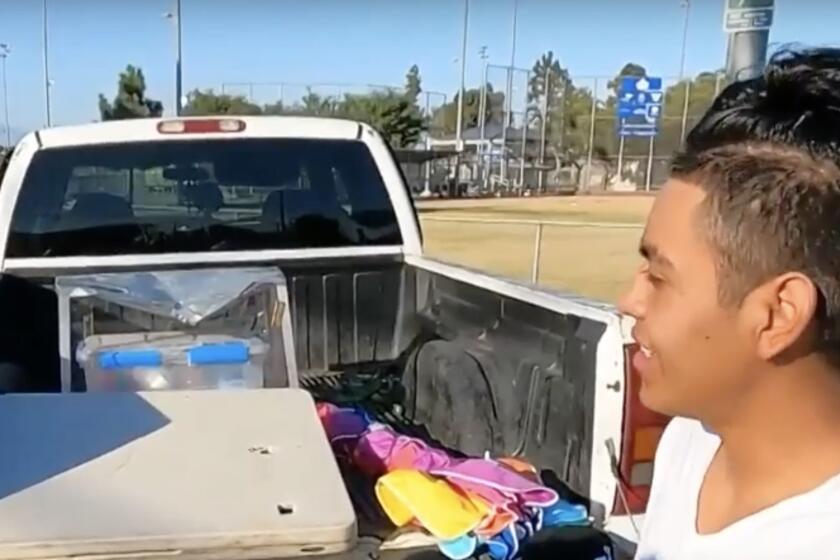Interstate 5 still closed, businesses slumping as Delta fire continues to burn in Shasta County, north of Redding
A roughly 45-mile section of Interstate 5 — the main artery between Northern California and the Oregon border — will remain closed indefinitely as firefighters continue to battle a wildfire burning along both sides of the freeway north of Redding, authorities said Friday.
Officials closed the freeway Wednesday afternoon shortly after the Delta fire broke out in the Shasta-Trinity National Forest, burning over the tops of pine and fir trees along the roadway and forcing some to abandon their vehicles to escape the flames.
The blaze had consumed 24,558 acres by Friday morning and is still actively burning along the interstate. It is not clear when the road will reopen, according to Capt. Brandon Vaccaro, a fire spokesman.
On Wednesday, California Highway Patrol officers had to send cars and trucks through a 12-foot gap in the I-5 center median designed for emergency vehicles. Many were able to turn around and escape the flames, but about 17 semis were abandoned by drivers who couldn’t maneuver their trucks out in time. At least four of the trucks were burned.
“It wasn’t like it was a couple hundred feet from the freeway. It was right on top of the freeway,” Sgt. Tim Hinkson of the California Highway Patrol said of the fire.
California Department of Transportation workers have cleaned up scorched semi trucks and other debris scattered along the road. Crews also are removing trees that burned in the area.
“The freeway itself is actually looking pretty decent, but we need to get the fire cleaned up that’s directly adjacent to it,” Vaccaro said.
The blaze has damaged two homes and forced the evacuation of several small mountain communities. Fire officials previously estimated that three homes had been damaged but revised those numbers on Friday.
Overnight movement of the blaze into Friday was moderate compared with the explosive growth seen the day before. The fire is still at 0% containment, but Vaccaro said that would likely change over the next few days as flames inch closer to the area recently burned by the nearby Hirz fire, where crews already have set up about seven miles of containment lines.
Firefighters are conducting strategic burns of vegetation in certain locations near the border of both fires in an effort to control the movement of the Delta blaze.
The Hirz fire, which has scorched 46,150 acres and is 80% contained, burned through vegetation underneath trees and left the majority of the timber in the area intact. Authorities hope to create the same burn pattern for the Delta fire as the two blazes converge.
“It gives us the opportunity to drive the fire and make it do what we want it to do, as opposed to having it be a free-for-all and take out everything in sight,” Vaccaro said.
Kelly Allen, a fire behavior analyst on the Delta fire, said an inversion layer sitting over the blaze is expected to lift Friday afternoon, around the fire’s “witching hour,” which is about 1 p.m. This means the blaze likely will burn faster. Unlike other fires this year that have remained somewhat muted under inversion layers, the Delta fire was active throughout Thursday.
“If the inversion had broken, that would have increased fire behavior pretty dramatically,” Allen said.
Wind speeds also are expected to increase throughout the day on Friday, further exacerbating issues for firefighters. Officials are to explain their strategies for snuffing out the blaze at a community meeting at 6 p.m. Friday at Dunsmuir High School.
The Delta fire remains about 10 miles from Dunsmuir, a community of 1,650 people about nine miles south of Mt. Shasta, where Andrew Bettinger works as general manager of Yaks, a restaurant.
He’s used to hearing big rigs and cars whiz by the eatery, which sits about 120 feet from the freeway. With the interstate shut down, he said it feels like the popular burger joint is sitting in the middle of a smoke-filled forest.
There’s always a fire season, but usually there’s only about one week of the year when the area is smoky, and even then, it’s usually from a distant fire, he said.
“And if the winds changed a little bit, the smoke would clear up, and then everybody would be happy again,” Bettinger said about past fires.
Restaurants and local businesses have seen tourism plunge this summer, not just from the Delta fire, but because of the Carr fire, which started July 23 and grew to 229,651 acres, making it the seventh largest fire in California history.
Typically, Yaks sees guests traveling between Portland, Ore., and San Diego, or Washington. Some patrons are from the Bay Area, headed to visit Crater Lake. Business usually dies down after Labor Day, Bettinger said, at least until the winter holiday season begins.
“However, August usually is one of the three months where we make 80% of our income for the year, and we were down well over 50% of our typical income for an August because of the smoke from the fires. This smoke [from the Delta fire] will probably increase the already slow season,” he said.
Twitter: @Hannahnfry
Twitter: @jaclyncosgrove
UPDATES:
11:25 a.m.: This article was updated with additional information from a fire behavior expert.
This article was originally published at 10:40 a.m.
More to Read
Sign up for Essential California
The most important California stories and recommendations in your inbox every morning.
You may occasionally receive promotional content from the Los Angeles Times.


